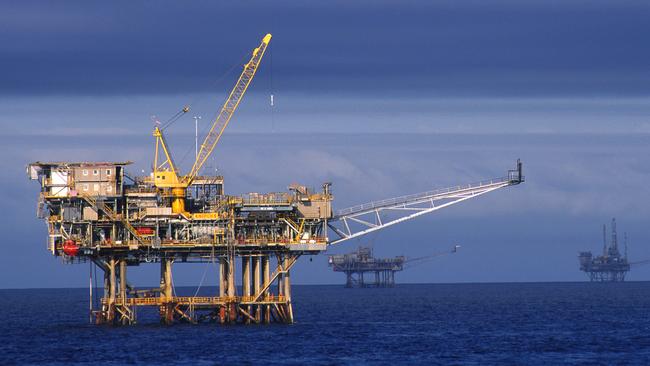Oil spill in Bight 100pc certain to make landfall: BP modelling
A Deepwater Horizon-style oil spill in the Great Australian Bight could take more than six months to control.

A Deepwater Horizon-style spill in the Great Australian Bight could take more than six months to control and would spread oil for thousands of kilometres, including to Kangaroo Island and the mainland, BP’s modelling has shown.
If a spill happened, there was a “high probability” it would affect important marine species, including sperm whales and pygmy blue whales.
The worst-case scenario has been released publicly by BP ahead of a decision by Australian regulators on whether to allow the company’s deep sea exploration program. Its application, which now involves two wells in commonwealth marine park areas, has been rejected twice.
If successful, the deepwater exploration targets are considered capable of yielding an oil province similar to Bass Strait.
Environment groups campaign against the Bight project said BP’s oil-spill impact projections were worse than their own.
Wilderness Society national campaign director Lyndon Schneiders said the independent regulator, the National Offshore Petroleum Safety and Environmental Management Authority, “needs to kill this thing dead”.
The opposition’s environment spokesman, Tony Burke, said he was seeking further information from the authority and environmental scientists on BP’s drilling plans.
“Labor supported re-establishing the Senate inquiry into this project,” he said. “Both the project and the process require this extra layer of scrutiny.”
The authority had been due to make a decision on Monday but said yesterday it had extended its deadline to consider BP’s drilling plans following the release of the spill impact report. It will deliver its next assessment decision by September 29.
The authority said it did not provide comment on the technical detail or merits of environmental plans under assessment.
BP said it was confident a well blowout could be contained within 35 days, but it based its models on the time it would take to drill a relief well and kill the blowout.
“BP have determined a realistic and achievable time to drill a relief well is 149 days,” the company said, but the oil-spill model was run for 209 days to map the trajectory of oil after release.
Modelling found that the probability of oil reaching Kangaroo Island and affecting the coast of Eyre Peninsula was between 68 per cent for spills in summer and 100 per cent at other times.
BP said there was a high probability of oil slicks affecting marine life, including sperm whales, pygmy blue whales, sea lions, fairy terns, Pacific gulls, short-tailed shearwaters and white-faced storm petrels.
The BP report said regardless of the season, it was certain that oil would make landfall.
BP said it should be noted that spill results were for “no-response” scenarios. “In reality, a number of response measures would be deployed, such as dispersant application and mechanical recovery. These results are considered highly conservative.”
Mr Schneiders said the Deepwater Horizon spill in the Gulf of Mexico had shown BP was not able to manage risk and the Great Australian Bight project was “the wrong place, too remote, too wild, too biologically important and not needed in the post-Paris world, and the wrong time”.
“Alarm bells must be ringing back in BP headquarters in London,” he said. “The company can’t afford another Deepwater Horizon.”


To join the conversation, please log in. Don't have an account? Register
Join the conversation, you are commenting as Logout